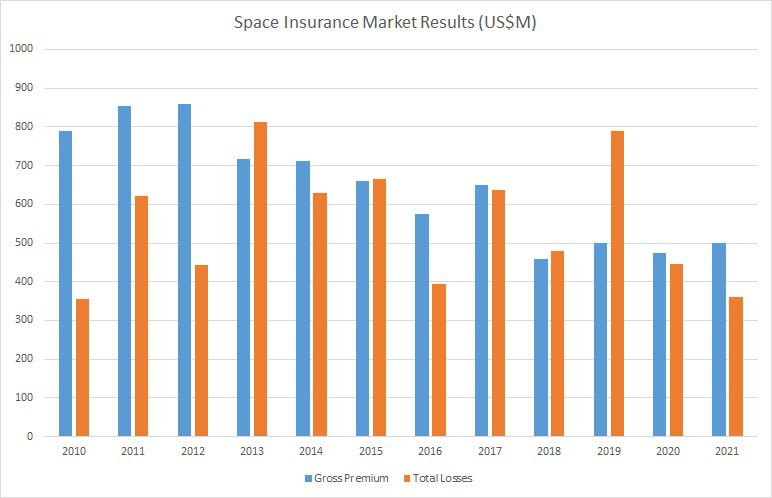Space Insurance Year 2021 was a profitable one when net losses are compared with premium revenue. According to the Seradata SpaceTrak database, the industry’s projected total losses (some of the claims have yet to be agreed) for the calendar year are circa US$360 million versus gross premium income (before broker deductions) of circa US$500 million. The winning year will be welcome news for underwriters, who made a major loss in 2019 and barely “broke even” in 2020 once broker fees and their running costs were taken into account.
The largest loss of the year (which may be counted by some underwriters as a loss in the previous year) was the US$225 million constructive total loss on the satellite radio satellite SXM-7, which had a payload issue involving the loss of both of its channels.
Major losses yet to be agreed include one apparently related to propellant depletion on MEASAT 3 (A-MSAT), and solar array damage caused to PSN 6 (Nusandtara Satu) by a suspected meteoroid strike during the Perseid meteor shower. A full updated round-up of the insurance year will be available to Seradata SpaceTrak users in early March.
.Post Script – On a lighter note: Among the comings and goings of capacity and underwriters to and from the market, we note the departure (at least for the time being) of legendary “old school” space underwriter, Tim Wright. A well-known character in the space insurance market, Tim will leave Nexus in April as it will no longer be actively underwriting space. We describe him as “old school” because, unlike many of the space underwriters of recent years who tend to be former space engineers, he instead made his way up through the market via the traditional route. We describe the well-liked Tim as “legendary”, of course, because he promised to buy us lunch if we did so. ![]()






